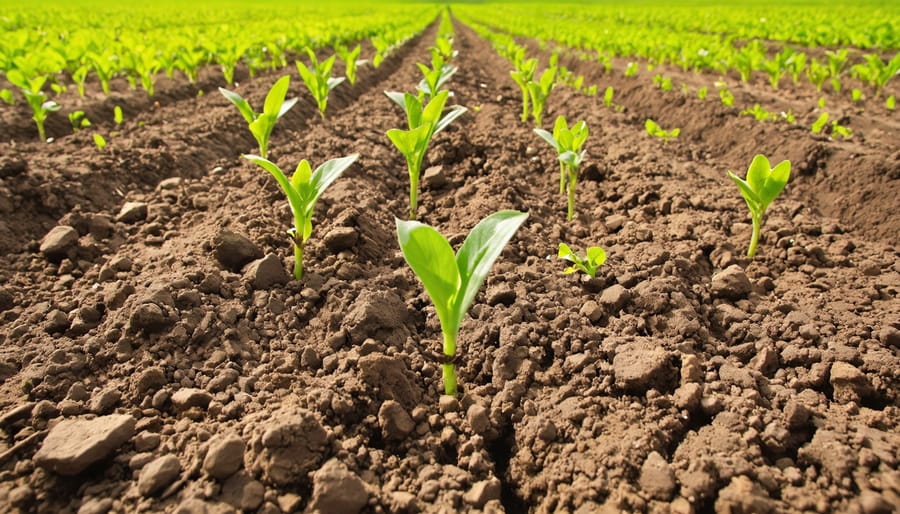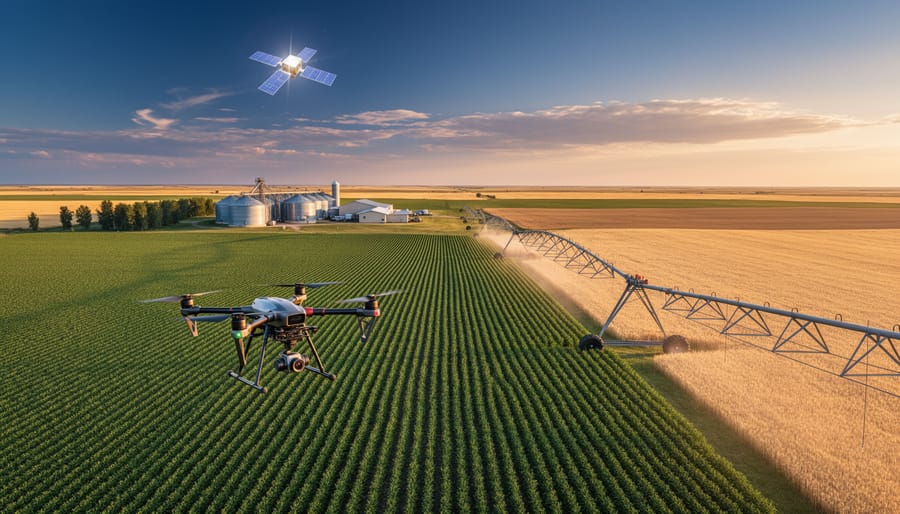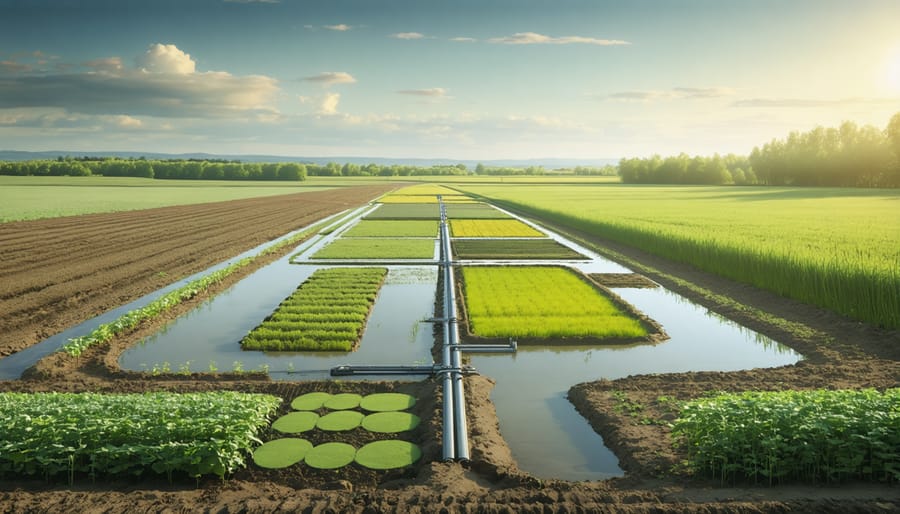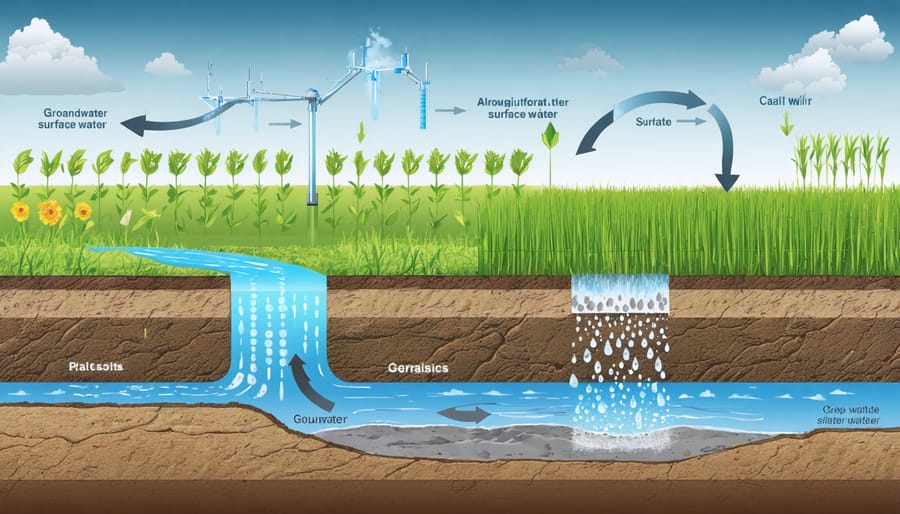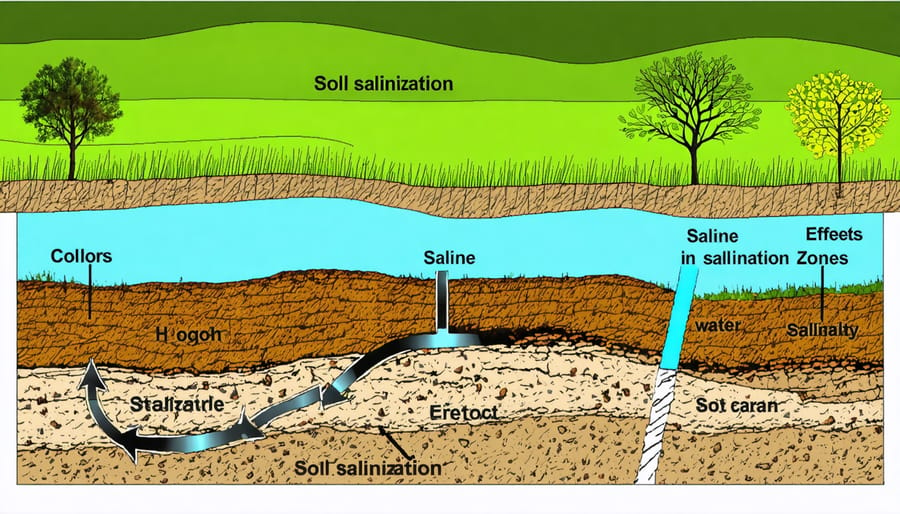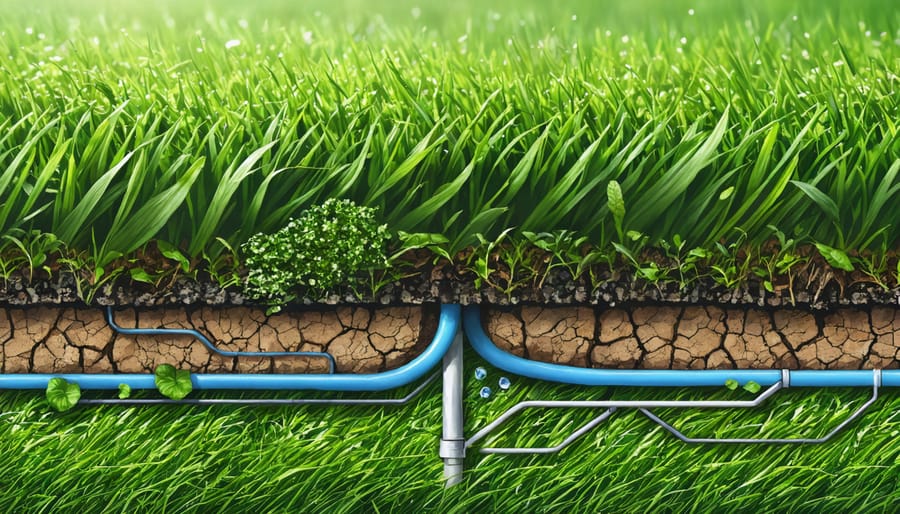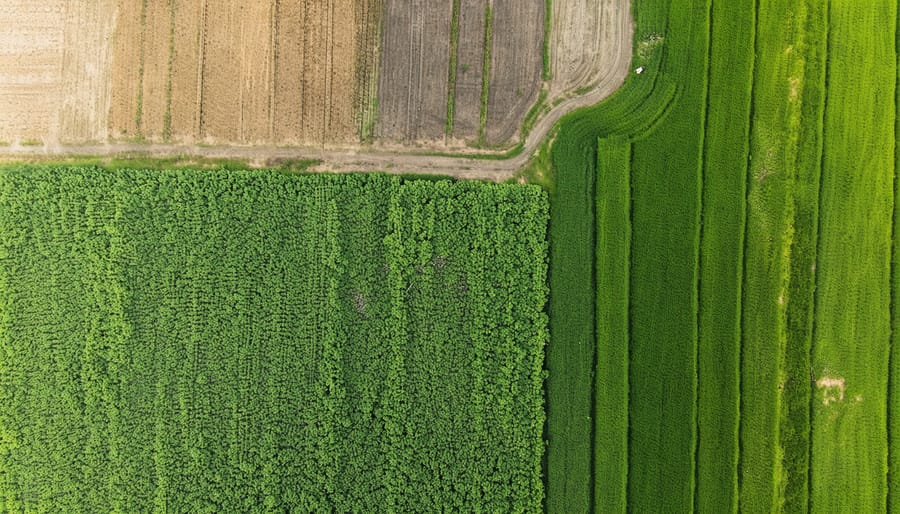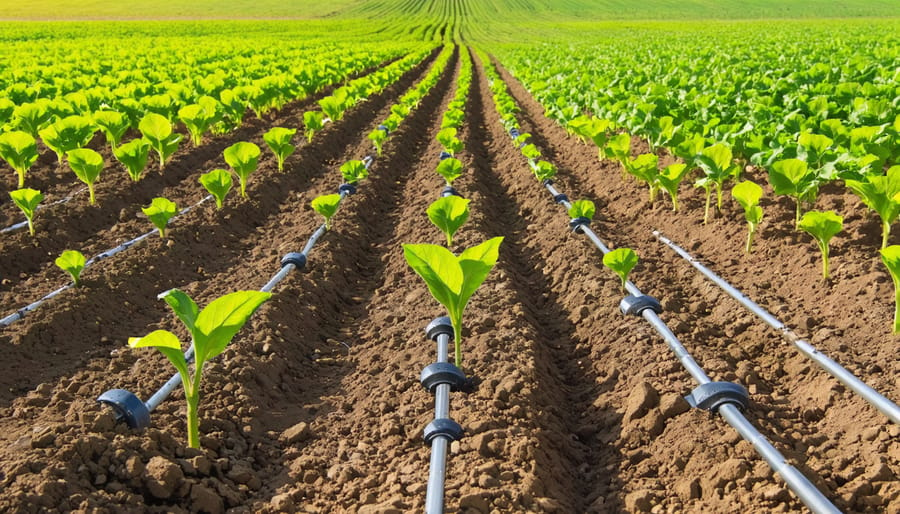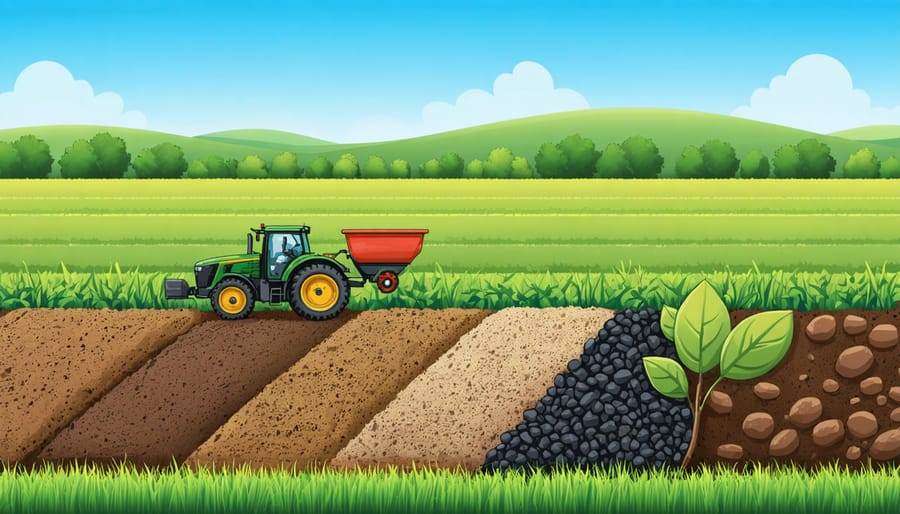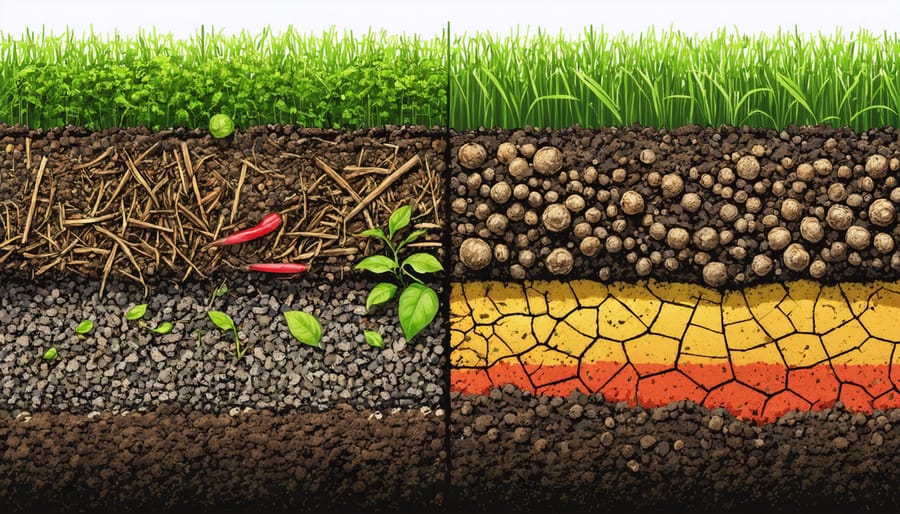Transform your soil’s water-holding capacity through proven soil moisture retention techniques that have helped Prairie farmers reduce irrigation needs by up to 30%. Adding organic matter, particularly composted manure and crop residues, creates a soil structure that acts like a sponge, dramatically improving moisture retention during Alberta’s dry spells. Incorporating water-retention polymers at optimal depths of 15-20 cm enables soil to hold up to 400 times its weight in water, releasing moisture gradually to crop root zones over extended periods.
Recent field trials across Southern Alberta demonstrate that combining these methods with strategic cover cropping has doubled water retention capacity while reducing evaporation losses by 40%. This integrated approach not only conserves precious water resources but also builds long-term soil health, supporting stronger crop yields even during challenging growing seasons. For Canadian farmers facing increasingly unpredictable rainfall patterns, mastering soil water retention has become essential for sustainable agricultural operations.
How Soil Water Retention Polymers Work in Alberta’s Climate
Types of Agricultural Polymers
As Canadian farmers face increasing water challenges in Alberta and across the country, agricultural polymers offer effective solutions for soil water retention. These specialized materials come in several forms, each suited to different farming needs and soil conditions.
Crosslinked polymers are the most common type, available as both potassium and sodium-based varieties. These granular materials expand up to 400 times their original size when hydrated, creating water reservoirs within the soil structure. They’re particularly effective in sandy soils and can last 3-5 years after application.
Linear polymers, also known as PAM (polyacrylamide), work differently by improving soil structure and reducing erosion. These water-soluble products are typically applied through irrigation systems and are especially useful for protecting topsoil during heavy rains.
Bio-based polymers, derived from natural sources like corn starch and cellulose, are gaining popularity among organic farmers. While generally more expensive than synthetic options, they offer excellent biodegradability and are approved for organic cultivation.
Coated polymers combine traditional water-retention capabilities with slow-release nutrients, making them ideal for operations looking to improve both water efficiency and fertility management. These products typically last one growing season and work well in container growing and newly established fields.
The Science Behind Water Absorption
The remarkable ability of polymer-based soil additives to hold and release water comes down to their unique molecular structure. Think of these polymers as tiny, super-absorbent sponges scattered throughout your soil. When water reaches these particles, they expand dramatically, capable of holding up to 400 times their weight in water.
These polymers work through a process called osmosis, where water molecules are drawn into the polymer’s structure through tiny spaces between its molecular chains. As the soil begins to dry, the stored water is gradually released back to plant roots, maintaining consistent moisture levels in the root zone.
What makes this particularly valuable for Alberta farmers is how these polymers respond to environmental conditions. In wet conditions, they swell and prevent excess water from washing away valuable nutrients. During dry spells, they slowly release their stored water, helping crops stay hydrated between rainfall or irrigation cycles.
The effectiveness of water retention polymers varies with soil type and conditions. In sandy soils common in parts of Alberta, they can significantly improve water holding capacity. In clay soils, they help create better soil structure while maintaining moisture levels. Most importantly, these polymers are non-toxic and gradually break down into natural components, making them a sustainable choice for long-term soil improvement.

Real Results: Alberta Farm Case Studies
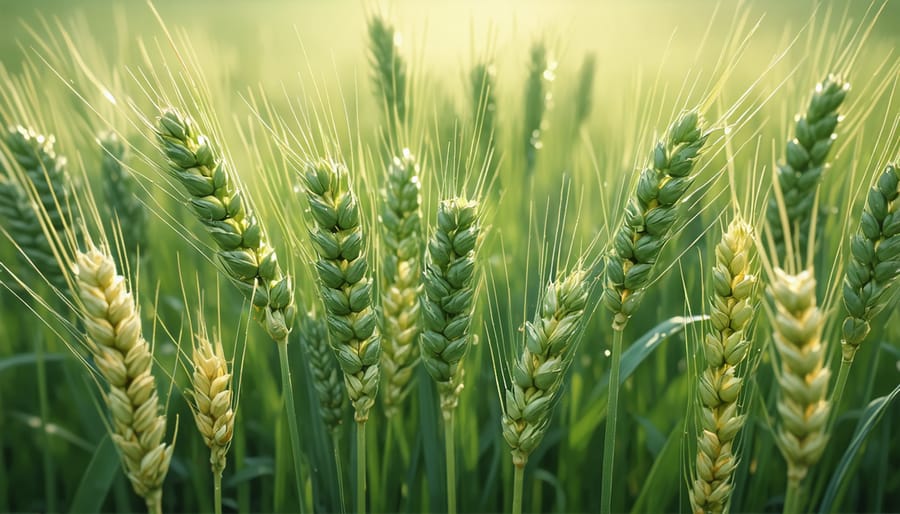
Wheat Field Water Savings
A recent field study conducted at the University of Alberta’s Research Station in Lethbridge demonstrated remarkable water savings in wheat cultivation through enhanced soil water retention techniques. Over three growing seasons, researchers worked with local farmers to implement polymer-based soil amendments across 40 hectares of wheat fields.
The results showed that treated fields required 30% less irrigation water while maintaining comparable yields to conventional fields. Wheat crops in treated areas demonstrated better drought resistance during critical growth stages, particularly during the hot summer months of July and August.
Local farmer Dave Thompson, who participated in the study, reported that his treated fields used approximately 200,000 fewer litres of water per hectare throughout the growing season. “The soil stayed moist longer after rainfall and irrigation,” Thompson notes. “We noticed the difference especially during those dry spells in late summer.”
The study also tracked soil moisture levels at various depths. At 30 centimetres, treated soil maintained 15% higher moisture content compared to untreated areas. This improved moisture retention translated to stronger root development and more efficient nutrient uptake.
Cost analysis revealed that while initial investment in soil amendments was higher, participating farms averaged water-related cost savings of $75 per hectare annually. Additional benefits included reduced soil erosion and improved soil structure, which contributed to better overall field management.
These findings align with similar results from other Prairie region farms, suggesting that soil water retention strategies can be effectively implemented across various Alberta growing conditions. The research team continues to monitor long-term effects and soil health indicators.
Market Garden Applications
Market gardens across Alberta have reported significant success with soil water retention techniques, particularly in organic operations under 10 hectares. Local farmer Sarah Thompson from Red Deer shares that implementing water-retention practices helped reduce her irrigation needs by 40% while maintaining consistent crop yields in her 2-hectare vegetable operation.
These smaller-scale applications often combine multiple approaches, including organic matter enhancement and mulching. Calgary-based urban farmer Mike Chen notes that incorporating composted materials increased his soil’s water-holding capacity, allowing him to extend the growing season by nearly three weeks during dry periods.
Successful market gardeners typically focus on building soil structure through minimal tillage and cover cropping. These practices create a soil environment that naturally retains moisture while supporting beneficial microorganisms. Many report that after three seasons of consistent soil-building practices, they’ve reduced water usage by 25-35% compared to conventional methods.
The Organic Market Garden Collective of Southern Alberta documented that gardens using combinations of organic mulch and proper soil management techniques required approximately 4L of water per square metre less per week compared to conventional gardens. This reduction is particularly significant for operations growing water-intensive crops like tomatoes and cucumbers.
For new market gardeners, starting with small test plots of 100 square metres can help determine the most effective water retention strategies for their specific conditions. Many successful growers recommend beginning with readily available materials like straw mulch and compost before investing in more complex solutions.
Implementation Guide for Your Farm

Application Methods and Timing
For optimal results, apply soil water retention polymers during spring planting or fall field preparation when soil moisture levels are moderate. Begin by conducting a soil test to determine your current moisture retention capacity and pH levels, which will help you calculate the right amount of polymer needed.
Mix dry polymer granules with your regular fertilizer at a rate of 10-15 kg per hectare for most field crops. For intensive agriculture, such as vegetable production, increase the application rate to 20-25 kg per hectare. Ensure even distribution by using a calibrated spreader and incorporating the polymers into the top 10-15 cm of soil.
When applying as a soil amendment, work the polymers into the soil using standard tillage equipment. For new plantings, you can also add the polymers directly to planting holes or furrows. If using liquid polymers, dilute according to manufacturer specifications and apply using conventional spray equipment during calm weather conditions.
Remember that timing is crucial – apply polymers when soil temperatures are above 10°C to ensure proper activation. Avoid application during heavy rain periods or when strong winds are forecast. For best results in Alberta’s climate, spring application typically works best between late April and early May, while fall application is ideal during September when soil conditions are still workable.
Regular monitoring of soil moisture levels will help you assess the effectiveness of your polymer application and adjust future applications accordingly.
Cost-Benefit Analysis
Implementing soil water retention solutions requires careful financial consideration, but the long-term benefits often outweigh the initial investment. For Alberta farmers exploring water-saving strategies, the initial costs typically range from $200 to $400 per hectare for polymer applications.
The return on investment typically becomes apparent within 2-3 growing seasons. Farmers report yield increases of 15-25% in drought-prone areas, with reduced irrigation costs of approximately 30%. A case study from Southern Alberta showed that a 160-hectare farm saved roughly $15,000 in annual irrigation costs after implementing soil water retention techniques.
Additional benefits include reduced soil erosion, which saves approximately $100 per hectare in topsoil replacement costs annually. Labour costs for irrigation management decrease by about 20%, while the improved soil structure leads to better nutrient retention, reducing fertilizer expenses by 10-15%.
Consider these factors when calculating your potential returns:
– Reduced water consumption and associated costs
– Increased crop yield and quality
– Lower labour requirements for irrigation
– Extended growing season potential
– Decreased soil amendment needs
– Reduced energy costs for pumping
While the upfront investment may seem significant, many Canadian agricultural support programs offer grants or cost-sharing opportunities for implementing sustainable water management solutions, making the initial burden more manageable for farmers.
Environmental Impact and Sustainability
Implementing effective soil water retention practices yields significant environmental benefits that extend far beyond immediate crop yields. By enhancing the soil’s ability to hold moisture, farmers can achieve substantial irrigation cost savings while contributing to long-term environmental sustainability.
In Alberta’s semi-arid regions, improved water retention helps combat soil erosion, a critical concern for agricultural sustainability. When soil maintains optimal moisture levels, it becomes more resistant to wind and water erosion, preserving valuable topsoil and reducing sediment runoff into local waterways. This protection of soil structure also supports healthy microbial communities, which are essential for nutrient cycling and soil health.
The environmental impact extends to groundwater conservation. By reducing the frequency of irrigation, proper soil water retention practices help preserve local aquifers and maintain sustainable water tables. This is particularly crucial in regions where groundwater depletion is a growing concern. Studies from southern Alberta show that farms implementing advanced water retention techniques can reduce their water consumption by up to 30% while maintaining crop yields.
Carbon sequestration is another significant benefit. Well-maintained soil with proper moisture levels can store more organic carbon, contributing to climate change mitigation efforts. Research conducted at the University of Alberta demonstrates that improved soil water retention can increase organic carbon storage by 15-20% compared to conventional farming methods.
From a biodiversity perspective, consistent soil moisture creates favorable conditions for beneficial insects and soil organisms. This natural ecosystem support reduces the need for chemical interventions and promotes sustainable farming practices. Many Alberta farmers report increased earthworm activity and improved soil structure within two years of implementing water retention strategies.
Looking ahead, these practices will become increasingly important as climate patterns become more unpredictable. By investing in soil water retention now, farmers are not only protecting their immediate interests but also contributing to the long-term environmental resilience of Canadian agriculture.
As we’ve explored throughout this article, polymer technology offers transformative benefits for Canadian farmers facing water management challenges. The ability to retain up to 400 times their weight in water makes these innovative materials a game-changer for agricultural operations, particularly in drought-prone regions of Alberta and across the prairies.
By implementing polymer-based soil amendments, farmers can expect reduced irrigation frequency, improved crop yields, and significant cost savings on water usage. The environmental benefits extend beyond individual farms, contributing to sustainable water management practices that benefit our entire agricultural community.
The success stories we’ve shared from local farmers demonstrate that the initial investment in polymer technology typically pays for itself within one to two growing seasons through reduced operational costs and improved crop performance. With changing climate patterns affecting our growing seasons, now is the time to consider implementing this proven solution.
We encourage you to take the next step by consulting with your local agricultural extension office or polymer supplier to determine the best application strategy for your specific soil conditions and crop types. Consider starting with a small test plot to observe the results firsthand and gradually expand implementation based on your experience.
Remember, sustainable farming isn’t just about preserving resources – it’s about building resilient agricultural practices that will support our farming communities for generations to come. By embracing innovative solutions like soil polymers, we’re investing in the future of Canadian agriculture.

